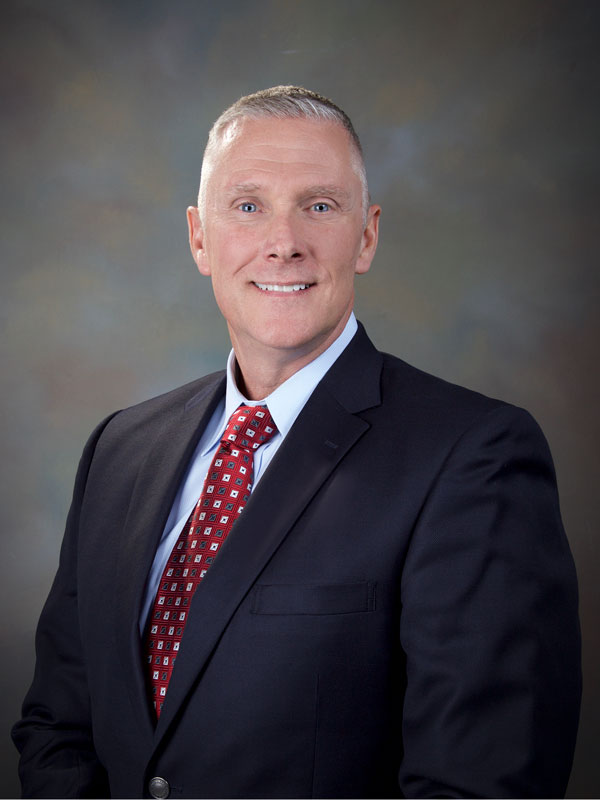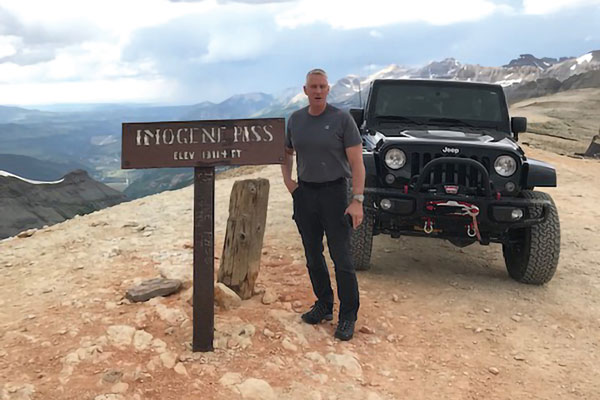Sandia electrical engineer charts path from custodian to DMTS

Harry Cincotta recently received a special appointment to Distinguished Member of the Technical Staff, after nearly 34 years at Sandia. His journey began as a custodian, then technologist, onto electrical engineer, and now to serving NNSA’s accident response team for the past decade.
“Harry has been a mentor to me multiple times in my career and I’m thrilled to see him recognized for his significant contributions to national security,” said senior manager Bernie Gomez. “His journey is inspiring, he is a role model for Sandia’s core values and behaviors, and he has given back to the Lab and the nation in so many ways.”
Harry joined Sandia in 1986 as a Grade 1 custodian, while he was attending the University of New Mexico for electrical engineering.
“I’d applied for a technical apprenticeship program and didn’t get in so I filled out the custodial paperwork on a whim, thinking it would help me get my foot in the door at Sandia,” he said.
It did. Once on board as a custodian, Harry swept and mopped floors by day and pursued his degree after hours. He soon joined Sandia’s Technical Institute Equivalency program, putting UNM on hold so he could accumulate credits while at Sandia during lunch and after work. The program was equivalent to a two-year associate’s degree.
“I received my Sandia technical equivalency in 1989 and then worked as a technologist,” he said. “My managers were very supportive of me going back to UNM and helped me join Sandia’s undergrad part-time program so that I could better manage my time and focus on my grades.”
Harry spent two years bringing his grades up with more time to focus on academics. He completed his electrical engineering degree and was promoted to Member of the Technical Staff in 1993. His first engineering job was in air-delivered weapons.
A brief detour
Harry was raised in a farming community in upstate New York, and he wanted something similar for his family. So in 1999, with two young children, his small-town roots called him up to Los Alamos. Harry describes his time at Los Alamos National Laboratory as a bit rocky.
“It was bad timing,” he recalls. “A life extension program was transitioned to Sandia California, there was the Wen Ho Lee story, and then the Cerro Grande Fire. I felt like it was time to leave, though I made lifelong friends in Los Alamos.”
Harry moved back to Albuquerque in 2001 and felt a bit more settled as he joined Sandia’s nuclear safety assessment program.
“As an engineer, I felt much more comfortable at Sandia than at a physics lab,” he said.

Harry has spent his entire Sandia career supporting the nuclear deterrence mission, from weapons systems to stockpile surveillance to safety assessment to nuclear counterterrorism, which eventually led him to his work in nuclear weapon accident response. He leveraged his experience in nuclear weapon safety to support NNSA’s Accident Response Group. Volunteering for ARG led to him supporting additional response teams, with one year in Washington, D.C., where he joined experts from all three NNSA nuclear weapons labs.
“You’re not really from this lab or that lab, but you’re all one team, one fight,” he said.
In 2010, after volunteering with ARG in some capacity since 1993, Harry was offered a position as ARG project lead, and he has led the team ever since. Harry is one of a handful of Sandians working on ARG full time to recruit, train and develop capabilities and equipment to safely recover from a weapon accident.
“It’s a readiness mission,” he said. “It gets you thinking about national security in a different way in order to plan for how our nation would respond to a nuclear weapon accident. We call on experts to take what they know about a system, which is everything, and join our team. ARG is comprised of the three weapon labs, Pantex, and Nevada’s Remote Sensing Laboratory, all working with NNSA.”
Looking back
A lot can change in 34 years: on Harry’s first day at Sandia, Irwin Welber was Labs Director, Ronald Reagan was president, and a postage stamp cost $0.22. Yet, Sandians haven’t changed very much.
“The people that work here are still enthusiastic and brilliant, and it’s always fun to work with people like that,” Harry said. “I’ve seen a positive shift in our scope of work. ND is still hugely critical, but Sandia has done a good job diversifying our work and impact on national security over the decades.”
Going from a custodian to a DMTS makes for a good story, but Harry believes it’s as much his story as it is Sandia’s.
“My journey is what this Laboratory has allowed me to do,” he said. “You can stay in the same place for 30 years if that suits you, or you can explore other opportunities. I look back and feel fortunate, truly blessed, that I had managers and mentors at critical points in my career path that took the time to share experiences and provide guidance.”